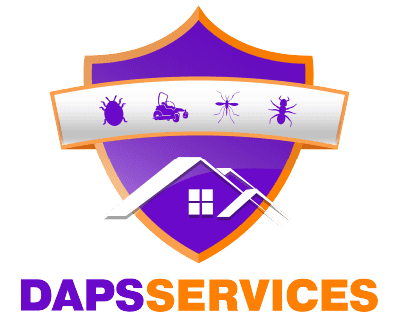Most homeowners don’t realize that tiny openings in their house serve as welcome signs for pests. The gap under your door might seem insignificant, but to an ant or a mouse, it’s like an open highway leading straight to your kitchen. Sealing cracks and crevices is one of the most effective yet overlooked steps in residential pest control.

Why Pests Love Small Openings
Pests don’t need much space to enter your home. Mice can squeeze through openings as small as a dime, while insects need gaps barely visible to the human eye. These small creatures are constantly searching for three things: food, water, and shelter. Your home provides all three, especially during extreme weather conditions.
Pests use cracks and crevices differently depending on their species. Ants follow scent trails through tiny gaps around windows and doors, establishing highways that more ants will follow. Cockroaches flatten their bodies to slip through baseboards and cabinet gaps, hiding during the day before emerging at night. Rodents gnaw to widen small openings around pipes and utility lines, creating permanent entry points that other pests can use.
Termites pose the biggest threat, as they can enter through almost invisible cracks in foundations and then remain undetected while causing thousands of dollars in damage. They particularly target homes with wood-to-soil contact or moisture issues around the foundation.
The Most Common Entry Points
Your home has dozens of potential pest entry points that you might never notice without careful inspection:
- Foundation cracks develop naturally as houses settle over time. These tiny fissures may seem harmless but provide perfect access for termites and other ground-based pests.
- Utility penetrations where electrical lines, water pipes, gas lines, and cable connections enter your home create natural gaps that builders often don’t seal properly. These points often allow pests direct access into wall voids.
- Door and window frames develop problems as weatherstripping deteriorates and frames expand and contract with temperature changes. Even tiny gaps in window screens offer entry for mosquitoes and other flying insects.
- Roof and attic vulnerabilities like damaged roof vents, gaps in soffits, or loose fascia boards give rodents and wildlife access to your attic space, from which they can move throughout your home.
Benefits Beyond Pest Prevention
Sealing cracks and crevices delivers benefits far beyond just keeping pests out. The same openings that allow insects and rodents to enter also leak air, making your HVAC system work harder and increasing your energy bills. Properly sealing your home’s exterior can reduce energy costs in most cases.
Moisture control improves when you seal exterior gaps. Excess moisture leads to mold problems and wood decay that can damage your home’s structure. By preventing water intrusion through proper sealing, you protect your home from both pests and moisture damage simultaneously.
The indoor air quality in your home improves when you close exterior gaps. Fewer openings mean less pollen, dust, and outdoor pollutants making their way inside. For family members with allergies or respiratory conditions, this simple step can make a significant difference in daily comfort.
Your property’s overall defense against the elements strengthens when you address cracks and crevices. From heavy rains to occasional cold snaps, the weather can be unpredictable. A well-sealed home handles these challenges better while keeping indoor conditions comfortable and pest-free.
When to Call the Professionals
Trained technicians know where to look for hidden entry points that most miss.
The equipment and materials professionals use often deliver longer-lasting results than consumer-grade products. Commercial pest control uses professional-grade sealants, metal flashing, and specialized exclusion materials stand up to weather extremes and persistent pests better.
Advanced problems require professional intervention. If you already have an active infestation, sealing cracks might trap pests inside rather than keep them out. Professionals can identify and address existing pest problems before implementing exclusion measures.
Difficult-to-reach areas like roof lines, high exterior walls, and foundation issues often require professional equipment and safety measures. Rather than risking injury attempting to seal these areas yourself, professional services offer the tools and training to address them safely and effectively.
The Role of Professional Pest Control
For the best results, discuss exclusion work specifically when hiring a pest control service. Ask about their approach to sealing entry points and how they integrate this with other treatment methods. A company that emphasizes prevention through exclusion alongside traditional treatments offers the most effective protection for your home.
By making entry point sealing a priority in your home maintenance routine, you create a fundamental defense against pests that enhances any other control methods you use. This proactive approach saves money, reduces chemical usage, and provides lasting protection for your property against pests.

